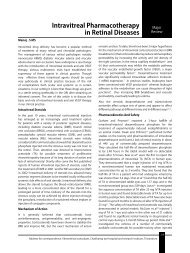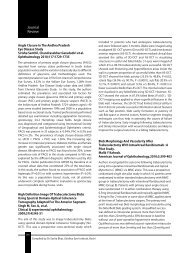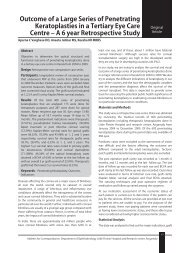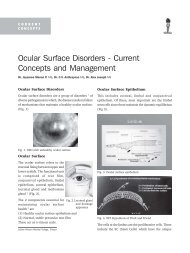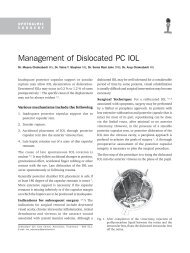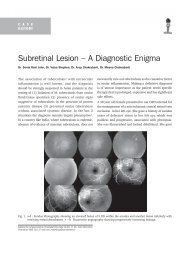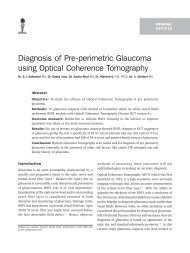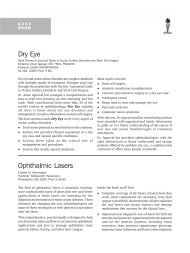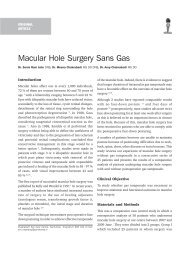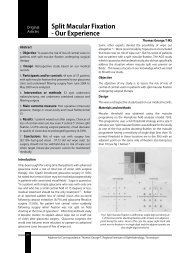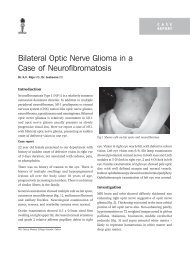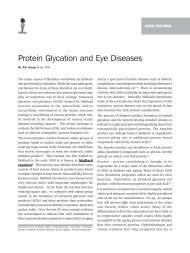Artificial Human vision - KSOS
Artificial Human vision - KSOS
Artificial Human vision - KSOS
Create successful ePaper yourself
Turn your PDF publications into a flip-book with our unique Google optimized e-Paper software.
424 Kerala Journal of Ophthalmology Vol. XXI, No. 4<br />
Table1. Details of work on Epiretinal prosthesis<br />
Surgeon University Country Company Status<br />
Dr M Humayun University of California USA Second sight Chronic trials<br />
Dr J Rizzo, Wyatt Harvard medical school, USA Boston retinal Abandoned<br />
Massachusetts eye and ear implant due to inconsistent reports<br />
infirmary after acute trial and<br />
started subretinal project.<br />
Dr Eckmiller, Dept of computer science, Germany Learning retinal Concentrating on<br />
Uty of Bonn implant information processing<br />
requirements.<br />
Dr G Richard University of Hamburg Germany IMI implants Chronic Implantation<br />
trials<br />
Dr Walter University of Aachen Germany IBT group Epi ret phase III.<br />
The work on successful epiretinal prosthesis is guided<br />
by the requirements like, preserving as much the normal<br />
anatomy/physiology of the eye as possible while<br />
minimizing the amount of implanted electronics<br />
required to power the device. Several groups worldwide<br />
have developed different designs of epiretinal implants<br />
that vary in terms of the intraocular and external<br />
elements. Listed in table 1.<br />
Dr Mark Humayun at the Doheny Eye Institute and<br />
University of Southern California started working with<br />
artificial <strong>vision</strong> initiative, IRP; since early 1990 with<br />
Second Sight Medical Products, Inc (Sylmar, CA.)<br />
Their system consisting of an externally mounted<br />
camera visual processing unit and magnetic coils was<br />
implanted in the temporal skull, which provide the<br />
inductive link telemetry system. The microelectrodes<br />
on the array use these pulses to stimulate any viable<br />
inner retinal neurons. The array is positioned just<br />
temporal to the fovea and is attached to the inner retinal<br />
surface using a single tack, which is inserted through<br />
the electrode array into the sclera 13,14 .<br />
After it was demonstrated in several different animal<br />
models that epiretinal stimulation could reproducibly<br />
elicit neural responses in the retina, preliminary tests<br />
of acute (



